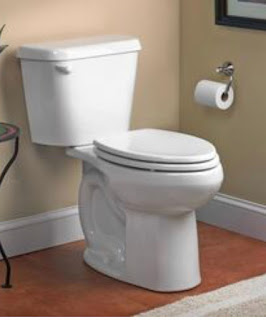SEPTIC SYSTEM 101
This spring, I have visited with so many people about their septic systems. Obviously, it's been a wet spring, so this has led to many conversations about water usage, the impact of our dear Mother Nature and septic system functionality in general. However, with so many people moving to the country and being "new to septic" I thought I'd take some time to give a quick lesson of what a septic system is and how it's designed to work.
I mean,
isn’t that what everyone wants to learn more about – wastewater, water usage, poop, and
toilet paper? I figure this is a win-win
for everyone. (I should also warn you my first language is sarcasm…brace
yourselves accordingly).
As I have stated before in previous posts/blogs/articles, so
many people don’t really know how their wastewater systems work. Because they don’t know how they work, they
don’t understand simple “dos” and “don’ts” of a septic system. I
totally get it! Until I got drug into
this business I never pondered what happened every time I flushed. I doubt you do either. However, when it comes to your own on-site
wastewater system (i.e. septic systems) if you don’t ponder it just a little
bit, it can lead to big, messy, gross, disgusting, expensive problem.
Have I enticed you enough thus far?
Great, let’s dig in!
Today, I’m going to write an overview of how a septic system
functions. I mean, if you’re going to
understand something you need to start with how it works, right? Right.
The above drawing gives you a basic idea of the components of a septic system. It’s really pretty simple – all water comes out of the house in one location, goes to the tank and then drains slowly to the lateral field. Your lateral field is underground and is made to create space for water to be absorbed or evaporated. Your tank, when functioning properly, is always full of water. In fact, after we come to pump your tank for regular maintenance, it only takes about 4-5 days for it to fill back up again with normal water usage. When we come to pump your tank, our goal is to clean out the solid matter that collects over time from the house (i.e. toilet paper, poo, and garbage disposal remnants). Obviously, we take all the water too, but when we come to pump, our main objective is to get the solids. We do this so over time it doesn't get so full that the solids drain out to the lateral field and plug it up. This is why pumping your tank regularly is so important. It helps extend the life of a septic system's lateral field.
But what else? Why could you have a mess someday? What could you do to screw up this
process? How do you make sure your system
always works properly?
I will touch on a few items here today, but elaborate in
articles to come – I gotta keep you hooked and coming back for more wastewater
knowledge, don’t I?
Basic issues with septic systems that can lead to “messes”
are as follows:
Too much water usage:
-
When your system is installed, it is “sized” for
your house. It’s not much different than
knowing your own pants size. You know
what fits and what doesn’t, right? Same
is true with your home. If you are
building a 4 bedroom house, it is assumed there is at least 1 person per
bedroom using about 100 gallons of water a day.
However, if 8 people move into this 4 bedroom house, you’re gonna have
problems! It’s like trying trying to
catch 20 gallons of water with a 5 gallon bucket, it just won’t work. Also, if there happens to be any water leaks
in the house, the same scenario applies.
Your system is sized for the number of bedrooms in your house. More water than that and you’ll see problems (i.e. back ups into the house or pooling water over your lateral field).
Toilet paper/items flushed:
-
You need to be very careful about what is
flushed down the toilet. Items can get
easily plugged or caught in the drain lines.
Using cheap, single-ply toilet paper is key. Just because something says it is septic
safe, doesn’t really mean it is. If
water can’t break it into small pieces, don’t flush it. Stay away from toilet paper that is thick, quilted, and 2-3 ply. This type of paper can maintain its integrity in the line and cause clogs in the line or baffle region of the tank. This is not good. I will say it again, if water can't break it into tiny pieces, don't flush it.
Laterfield/leachfield/drainfield:
-
Know where it is and leave it alone. Don’t drive over it, build over it, or plant
anything more than grass on it. It needs
to be free to evaporate water. Also, divert any run-off water AWAY from this area.
Pump tank regularly:
-
Think about your septic tank like you do
changing the oil on your car. It needs
to be done regularly. The more people
who live in the house, the more frequently you need to keep it pumped. Typical recommendations are every 3-5 years.
And
that’s it for today. Wasn’t it fun? I
know I always truly enjoy talking poo, hopefully in time, you will as well! See
you next week!



Comments
Post a Comment